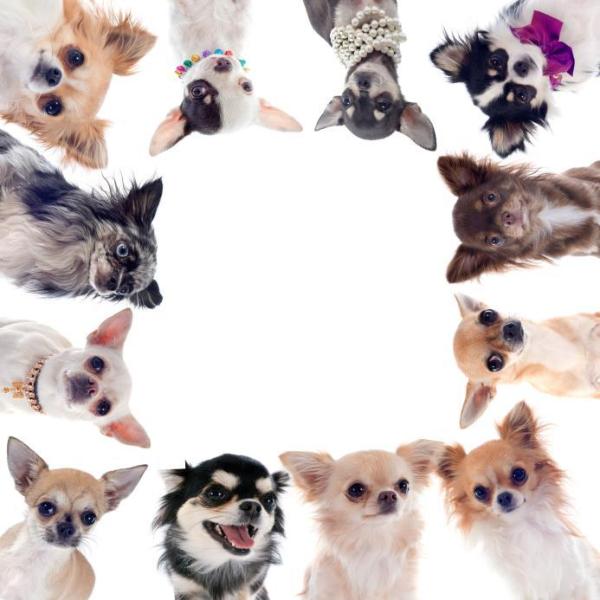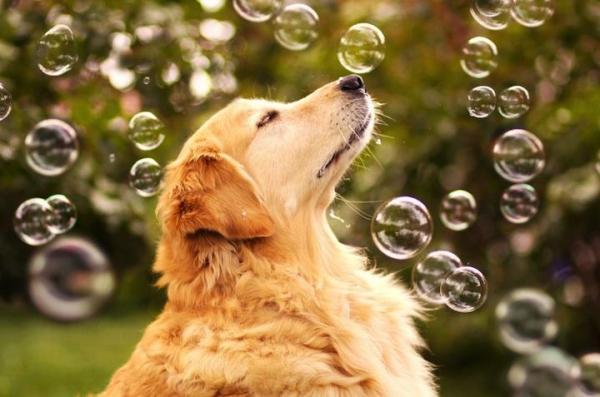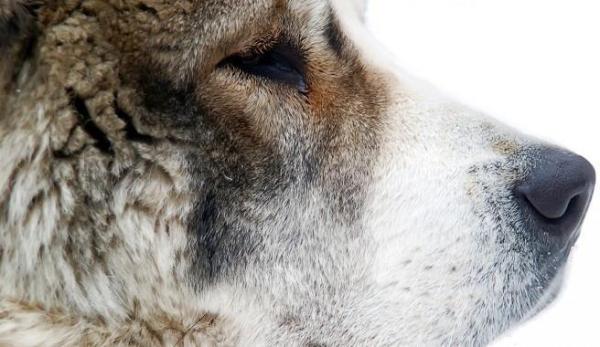A Dog's Age in Human Years



See files for Dogs
It is a common misconception that one dog year is the equivalent to 7 human years. While this calculation seems to make sense if thought about momentarily, it doesn't have the scientific proof to back it up. There are other values which allow us to better define the physiological development of a dog, which is not always comparable to a human.
On AnimalWised, we will show you know how dog's age during their life. Although we remind you that no matter the age, the animal's health is an important factor in determining how long they might live. Perhaps a boxer will live for 12 years (beyond its life expectancy) and a beautiful Maltese may pass suddenly when it reaches 7 years old (which is only around half its life expectancy). Keep reading this informative article to find out more!
Puppies and Young Dogs
Like human babies, a puppy is considered so precious as it is at an age of both discovery and vulnerability. For a young dog to develop properly, they need to be healthy and receive all necessary care.
But if we want to compare a dog's start in life to that of a human, the considerations change as they develop. A 3 month old puppy could be comparable to a 3 year old human, but at 6 months the comparison would be closer to a human aged 10 years.
By the time a dog reaches the age of 12 months, its age equivalent to a human has reached 20 years. At the end of this adolescent stage, when a dog is around 2 years old, the human equivalent is 24 years.
This is a wonderful time for a dog (as it can be for humans) this is when a dog is at its developmental best and can fully enjoy life. As a dog owner, you need to take care and ensure your pet is making the most of their time, something which we humans can get a lot of enjoyment out of and improve life expectancy.
We must point out that the teeth will reveal the age of our dog. However, in the case of puppies it is even more important to know their age, more so than adults. This will tell us if they should drink milk or if they are ready to eat solid food.
Here are the notable changes in the teeth of puppies and young dogs:
- From 7 to 15 days of age: At this stage puppies do not have teeth. They are guided by tactile stimuli because they have eyes and ears still closed. They have at this stage several reflexive or involuntary responses, pure stimulation. We will have the suction reflex which, when bringing something to your lips, will pick up and press as if it were a breast to get their food. In the case of the perineal reflex, it would be the mother responsible for activating it by licking. But, we can tap their anus to see that if they close and open without problems. The reflection of excavation is where they push any surface looking for the heat of their mother and her breasts.
- From 15 to 21 days of life: Upper incisors (are 6) and fangs (are 2) of milk appear. Small breeds usually take longer. At this stage they open their eyes and ears. The reflexes disappear and they are already walking, looking for mischief and their food. They will still drink milk, but the teeth do not appear yet. They will have an absence of teeth until the 15 days of life, at which time the incisors and temporary canines or milk (between 15 and 21 days) appear. Then the rest evolve and the months of life will change by the definitive that are 42 pieces.
- From 21 to 30 days of life: the lower incisors and fangs of the mandible appear.
- From one month of life up to 3 months: here the wear of milk teeth or scratching occurs. Remember that baby teeth are finer and square than the definitive ones, which will be somewhat more rounded until they are drained or worn.
- At 4 months: we will observe the eruption of the definitive central incisors, and will be present in both jaws.
- Up to 8 months: definitive change of all incisors and fangs.
- Until a year of life: all the definitive incisors have left. They will be very white and with rounded edges or "fleur de lis" as they are known. Also the definitive tusks are already found.

Adult Dogs
So far we have seen the equivalences between canines and their human companions up to the age of 2 years.
After two years where rapid growth occurs during its adolescence, each year is equivalent to around 4-5 human years. Thus a 6 year old dog would be considered around 40 in human years.
At this stage you might start to see symptoms of indicative of maturation such as increased serenity or some dental problems, but do not worry. A well cared for dog can continue to have a high quality of life for years to come.
Enjoying companionship, providing lots of exercise and teaching your dog various tricks will improve both quality of life and life expectancy. Remember to take your dog for regular vet check ups as their age advances. Especially if your dog is a large breed or has a genetic predisposition to disease.
Here are the notable physical changes within an adult dog's teeth:
- From a year and a half of life to two and a half years: We can see a wear or scratching of lower central incisors, which will begin to show a more square shape.
- From 3 to 4 and a half years: their 6 lower incisors will become square, mainly due to wear.
- From 5 to 6 years of life: the wear of the upper incisors by the scratching will be evident, ours is in the years prior to old age.
- From the 6 years of life: you will see a greater wear of all teeth, there is more tartar and the fangs also become more square than pointy. They may also lose pieces, but it will depend on your dog's food and lifestyle. From this moment the dog prepares to enter their old age, which begins at the age of 7.
Learn different ways of cleaning your dog's teeth in our AnimalWised article.

Old Dogs
In humans, calculating life expectancy does not change intrinsically according to race. However, this is not the case with dogs as their breed and body type has a great effect on how long they are expected to live.
Some large dogs can live up to 12 or 13 years, so when a large breed dog has reached the age of 9 we can consider that dog to be in its old age. Besides being a big breed of dog, the pedigree of its breeding can have an impact on life expectancy as pure breeds tend not to live as long as cross breed dogs.
Instead, small dogs and mutts tend to live about 16 years or more on average, depending on their care, feeding and quality of life.
If we use life expectancy calculations which are specific to the size and breed of a dog, we see that small dogs (up to around 10 kilograms) which live to 15 years are the human equivalent of 76 years old. Large breed dogs (over 40 kilograms) at the same age are considered to be around 120 years old in human terms.
While it is pragmatic to consider how much time you get to enjoy with your beloved dog and make considerations for its older age, it is equally important to enjoy all the time you spend with them whatever age they might be. Caring properly for your pet every day is the best way to ensure your life together will last as long as possible.

Calculate Dog Years
This table will help you to calculate the approximate age of your dog in human terms, but to find out how to keep your dog as healthy for as long as possible, check out these other articles:

If you want to read similar articles to A Dog's Age in Human Years, we recommend you visit our Facts about the animal kingdom category.









